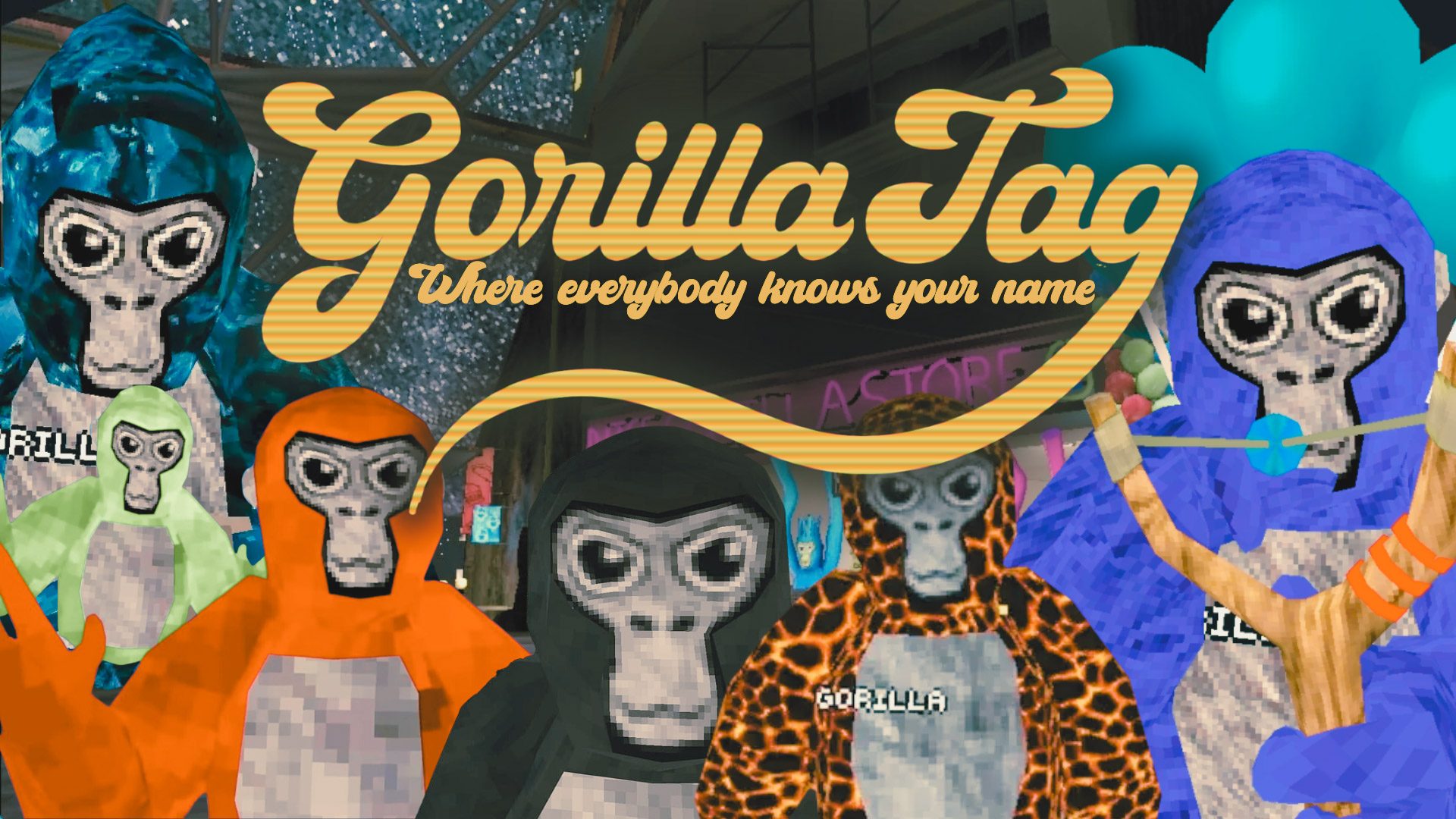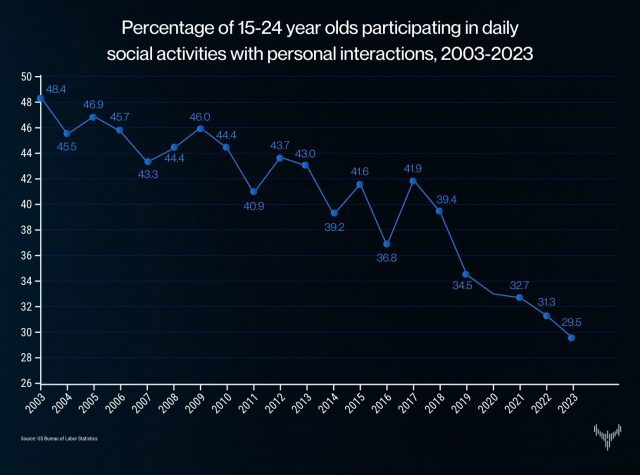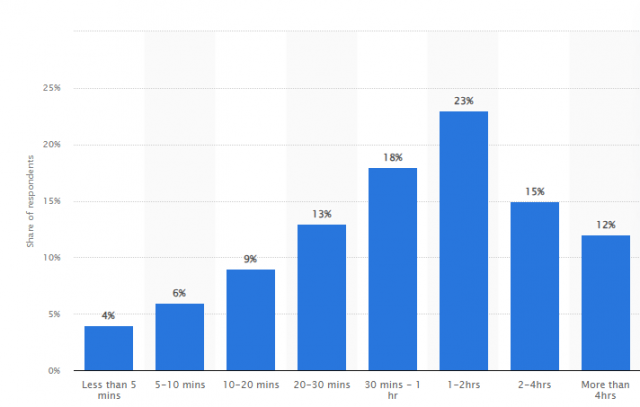Tech News
How Gorilla Tag Became a $100 Million VR Success on Quest

One out of every three Quest owners has downloaded Gorilla Tag, making it the most successful game ever on standalone VR. Created by studio Another Axiom, Gorilla Tag has not only been successful as a game but has also become a cultural phenomenon in the virtual reality gaming space. Since its launch in 2021, it has gained over 12 million users and generated more than $100 million in revenue.
Guest Article by JP Minetos
JP Minetos is a member of the Investment Team at Hartmann Capital, a frontier venture fund that invests in Games, VR/XR, Generative AI, and immersive technology. The fund has investments in companies like Flat2VR, Sinn Studio, Tripp, and ShapesXR. JP specializes in VR and Social Gaming and has collaborated closely with top developers on the Quest store. You can find him on X account @jpminetos, where he shares data and perspectives on XR & the games market. For investment inquiries, you can contact him via DM on X or LinkedIn.
While other VR games have seen success, Gorilla Tag stands out for combining social interaction with a unique VR movement system. Similar to groundbreaking free-to-play games like Fortnite and League of Legends, Gorilla Tag has established itself by creating a community-driven ecosystem that attracts over a million players daily.
Its success signifies the rise of a new genre of games specifically designed for VR, offering an immersive experience unparalleled by other platforms. The game’s social aspect, engaging gameplay, and innovative free-to-play model have been key to its popularity. Despite primarily being played by young teenagers, it has become a popular game and cultural phenomenon, although it may not receive the same level of coverage as other successful titles. So, what makes Gorilla Tag so appealing?
Why Gorilla Tag is Successful
While VR may lack the computing power of other gaming platforms, it excels in player engagement through player embodiment. Unlike traditional games where players control a character using a keyboard or controller, VR allows players to feel like they are the main character.
This means that social interactions in VR are more natural and immersive, akin to real-life interactions rather than virtual meetings. The disconnect between technical and social aspects is minimal. At its core, Gorilla Tag is a social space with a ‘tag’ game loop, where players are drawn not only by the gameplay but also by the social interactions.
Gorilla Tag is designed to enhance social connections, placing players in a social lobby as soon as they enter the game. Voice chat is enabled by default, allowing players to communicate without the need for a press-to-talk action. The audio is spatial, adjusting based on players’ physical positions in the virtual world.
These features encourage natural camaraderie among players, leading to the formation of friendships and private lobbies for continued play. Player interactions in Gorilla Tag reflect real-life social norms, with players forming groups, making eye contact, and engaging in conversations.
For many younger players, Gorilla Tag has become their ‘third place’—a space outside of school and home where they can gather and socialize. The game’s social environment and unique gameplay keep one-third of its monthly players logging in daily, with peak activity after school hours.
 To foster a social environment, users need to spend time in a dedicated space for interaction. While the average session time for Gorilla Tag is not publicly disclosed, the average session length for Quest content is around 30 minutes, higher than traditional social media platforms. It is estimated that Gorilla Tag has an average session time of approximately 60 minutes, similar to other successful VR multiplayer games.
To foster a social environment, users need to spend time in a dedicated space for interaction. While the average session time for Gorilla Tag is not publicly disclosed, the average session length for Quest content is around 30 minutes, higher than traditional social media platforms. It is estimated that Gorilla Tag has an average session time of approximately 60 minutes, similar to other successful VR multiplayer games.
This aligns with the average PC gaming session length of about 58 minutes, with top players spending up to 5 hours per session. It is important to note that these statistics represent single sessions, and users often have multiple sessions in a day.

Nonetheless, Gorilla Tag stands out in its ability to keep users engaged within a single social environment, a feature lacking in social media where users tend to switch between various threads and interactions.

Status and In-Game Purchases
The question arises: how has a free-to-play game like Gorilla Tag managed to generate $100 million in revenue?
While the game is free on the Meta’s Horizon Store, it is priced at $20 on Steam, with over 90% of installs occurring on the Horizon platform.
Prior to the rise of mobile gaming, revenue generation in gaming was primarily through paid titles, DLC, or subscriptions like World of Warcraft. However, the free-to-play model gained momentum with mobile gaming, evolving to include various monetization strategies, such as microtransactions in AA and AAA titles.
With 12 million unique users and $100 million in revenue, Gorilla Tag sets a remarkable benchmark for a free-to-play game. The key to this success lies in in-game cosmetics.
Given the game’s focus on social interaction, players desire to express themselves and display their status within the game. Cosmetics provide a means for players to personalize their characters, reflecting their personalities and achievements. This enhances a sense of identity and social standing within the game community, particularly when certain items become status symbols.
The game features a dedicated store area where players can purchase items. Hot and seasonal items are periodically available, often for a limited time, creating urgency for players to make purchases. This setup mimics real-world shopping experiences and taps into consumer psychology related to scarcity, motivating players to showcase unique or rare cosmetics to others in the game.
The in-game purchase process is smooth, allowing players to easily browse and select items with minimal steps. By streamlining the transaction process and creating a shopping-like experience, Gorilla Tag ensures players can acquire new items seamlessly, making the buying process convenient and hassle-free.
As a result, players regularly invest in new items to maintain unique and distinctive avatars. This continuous cycle of cosmetic updates, coupled with a user-friendly transaction flow, proves to be an effective monetization strategy, contributing to the game’s substantial financial success, a rare achievement for free-to-play VR games. Another VR title that has surpassed $100 million in revenue, Beat Saber, charges for the base game and generates additional revenue through DLC offerings.
Continue on Page 2: Less friction → More play time »
Less friction → More play time
A significant challenge for widespread VR adoption is the hardware and user experience friction associated with accessing VR content. Users require a charged headset, an appropriate play area, and the motivation to wear the headset, which are common hurdles across all VR applications, including Gorilla Tag.
To address this friction, Gorilla Tag focuses on reducing user experience design-related friction. Many VR gamers find the process of starting a game cumbersome, involving 2D menus, loading screens, and multiple steps before entering the game world, which can deter players from engaging with the game.
Gorilla Tag minimizes this friction by simplifying the player’s journey from launching the game to social interaction. Players bypass traditional main menus and interfaces and are immediately placed into a hub, from where they can move into a social lobby without additional steps. This straightforward design significantly reduces the time between starting the game and participating in the core experience.
The entire process, from pressing start on the Quest home screen to entering a social lobby, takes about 10 seconds. This swift transition eliminates much of the friction typically associated with VR gaming, enabling players to quickly immerse themselves in the game. By making the game accessible within seconds, Gorilla Tag eliminates a key frustration of VR gaming, contributing to its high retention and active user base.
Demonstration of going from putting on my Quest to being in a Gorilla Tag social lobby: ~12 seconds.
Unique to VR: Gorilla Tag’s Groundbreaking Locomotion
Successful VR games leverage the core strengths of VR, including motion controls, 6DoF, and spatial awareness, to create unique experiences impossible on traditional gaming platforms.
Gorilla Tag embodies this approach with its innovative locomotion system, known as ‘Gorilla Locomotion.’ Unlike traditional games that use joysticks for movement, Gorilla Tag requires players to physically swing their arms to navigate the game world.
Players use their real arms to propel themselves in the desired direction, with the only additional control being a grab function to cling to surfaces. This intuitive yet challenging system enhances immersion and gameplay, creating an experience unparalleled by traditional controllers.
Although the game provides a basic tutorial, new players often seek advice from experienced players, fostering a sense of community and collaborative learning. Veteran players are known for assisting newcomers in mastering the core mechanics of the game, such as swinging from branches and scaling trees. The dynamic movement system of the game falls within the ‘easy to learn, difficult to master’ range, providing a highly rewarding experience for players as they progress. This system is similar to other genre-defining games like Counter-Strike and Rocket League, where practice and dedication lead to mastery. The feedback loop of improvement is a significant factor in keeping players engaged and coming back for more. Gorilla Locomotion has been so successful that it has inspired developers to create similar movement systems specific to virtual reality.
Gorilla Tag has designed a natural yet challenging system that keeps players deeply immersed in the VR experience. The game’s gameplay is intricately tied to physicality and immersion, making it unsuitable for traditional screens with joysticks. This VR-specific design helps maintain player retention within the game.
The virality of Gorilla Tag is driven by its popularity on social media platforms. Its memeable nature and easy-to-share gameplay have attracted content creators on platforms like TikTok, YouTube, and Twitch. The game’s unique art style and chaotic movement make for entertaining clips that garner millions of views and shares. User-generated content, from memes to gameplay videos, has fostered a growing community around the game, with players showcasing their skills and funny interactions in lobbies.
Gorilla Tag lends itself to spontaneous content that social media algorithms favor, leading to viral videos that attract new players. Creators across platforms have built followings based on Gorilla Tag content, contributing to the game’s word-of-mouth marketing and sustained relevance on social media.
Gorilla Tag has not only achieved financial success but has also set a new standard for VR gaming. Its innovative player movement, social interaction features, and free-to-play model are shaping the future of VR gaming by showing that well-designed games can overcome hardware limitations and user friction. The game’s success serves as a blueprint for the next generation of VR titles, highlighting the potential of VR to offer unique experiences that are exclusive to the platform.
With ongoing updates, a growing player base, and cultural impact, Gorilla Tag has evolved into more than just a game—it’s a movement that signifies the potential of virtual reality to revolutionize gaming. The VR social renaissance is underway, with Gorilla Tag paving the way for future success stories in the industry. Please rewrite this sentence.
-

 Destination9 months ago
Destination9 months agoSingapore Airlines CEO set to join board of Air India, BA News, BA
-

 Breaking News10 months ago
Breaking News10 months agoCroatia to reintroduce compulsory military draft as regional tensions soar
-

 Gadgets4 months ago
Gadgets4 months agoSupernatural Season 16 Revival News, Cast, Plot and Release Date
-

 Tech News1 year ago
Tech News1 year agoBangladeshi police agents accused of selling citizens’ personal information on Telegram
-

 Productivity12 months ago
Productivity12 months agoHow Your Contact Center Can Become A Customer Engagement Center
-

 Gadgets1 month ago
Gadgets1 month agoFallout Season 2 Potential Release Date, Cast, Plot and News
-

 Breaking News10 months ago
Breaking News10 months agoBangladesh crisis: Refaat Ahmed sworn in as Bangladesh’s new chief justice
-

 Toys1 year ago
Toys1 year ago15 of the Best Trike & Tricycles Mums Recommend























